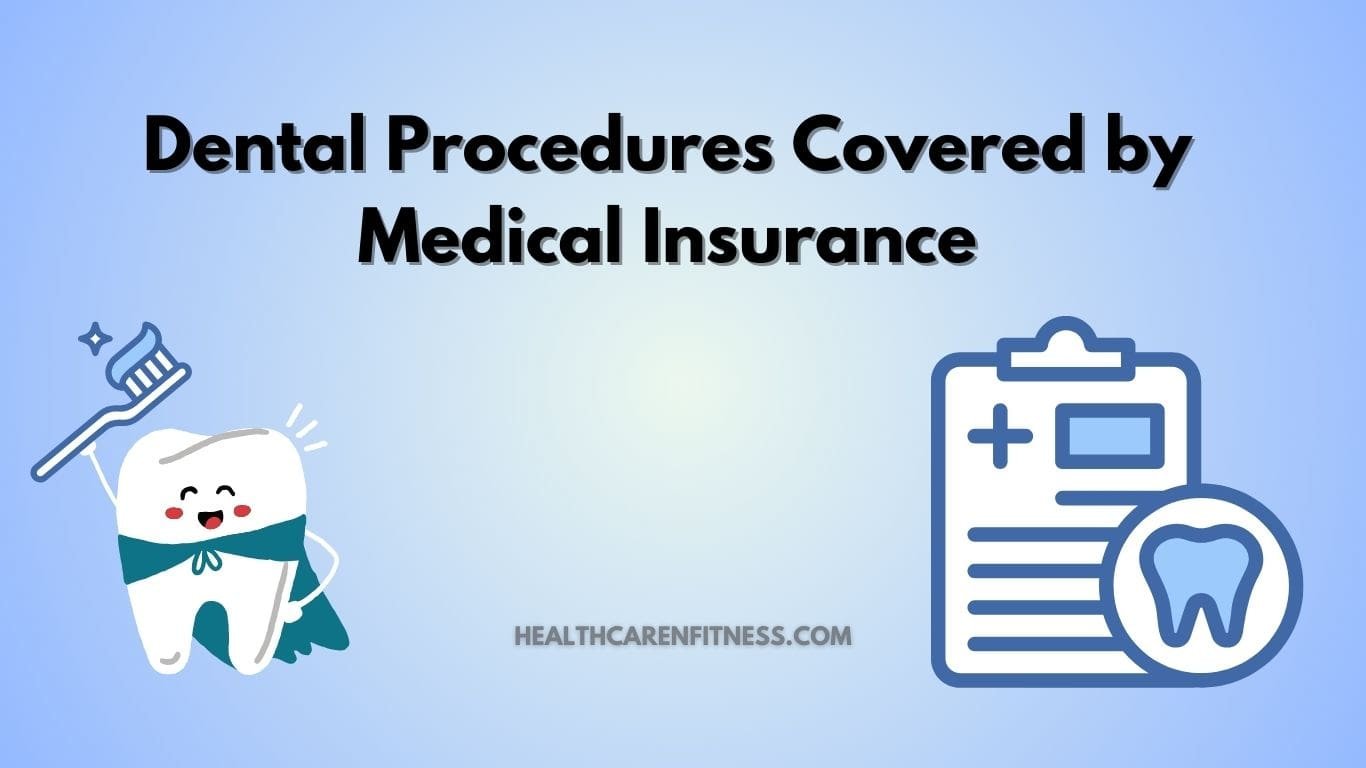
Introduction
A healthy smile is not just an aesthetic issue; it is a fundamental aspect of overall well-being. Dental care plays a vital role in maintaining good health, and knowing Dental Procedures Covered by Medical Insurance is essential. Healthy teeth and gums are essential for a strong body. Neglecting dental care can cause serious health problems. Visiting your dentist regularly for checkups and maintain good oral hygiene is necessary. Medical insurance can help you afford these dental care. This includes preventive care, which is essential for good health. Understanding and knowing your insurance coverage can save you money. This article will explore the Dental Procedures Covered by Medical Insurance and the importance of dental care
Taking charge of your dental health begins with regular checkups and cleanings, often covered by insurance. These preventative measures safeguard the future of your smile and minimize the need for costly follow-up treatments.
Types of Dental Procedures Covered by Medical Insurance:
1. Preventive Care
Regular dental checkups, cleanings, and fluoride treatments are often covered by medical insurance. These preventative measures help catch potential dental problems early, preventing more expensive and complex treatments later.
2. Basic Restorative Care
Dental insurance covers basic restorative procedures such as fillings, crowns and inlays, which are essential for preserving the function of your teeth and preventing further damage. These procedures are not only important for oral health but also for overall well-being.
3. Endodontics
Endodontic procedures such as root canals are often covered by insurance plans. These treatments save teeth from extraction by addressing infected or damaged tooth pulp.
4. Orthodontics
Orthodontic treatments, such as braces, can be expensive. Luckily, some medical insurance plans cover orthodontic services, providing financial relief to families.
5. Emergencies
Medical insurance typically covers emergency dental care, such as management of broken teeth, extreme pain, and infections. This ensures that dental emergencies are addressed promptly without putting a strain on your finances.
Factors Affecting the Dental Procedures Covered by Medical Insurance Coverage:
Understanding the nuances of dental coverage within different medical insurance plans is critical. Let’s have a look at some of these factors.
1. Plan Type
Coverage for dental procedures may vary depending on the type of medical insurance plan. HMO plans typically cover fewer services, while PPO plans offer more flexibility, and HDHPs have higher deductibles but lower premiums. Choose the plan that best suits your dental care needs and budget.
2. Plan Deductible
Your dental plan deductible, the amount you pay out of pocket before insurance begins to cover, can have a significant impact on your total dental expenses. When selecting a plan, consider your deductible and budget accordingly to avoid unexpected costs.
3. Copays and Coinsurance
Copays and coinsurance are two key factors that impact out-of-pocket expenses for dental care. Understanding these terms and how they work can help you budget and plan for dental care costs.
4. Annual Maximum
Insurance plans often have an annual limit, which is the maximum amount they will pay for dental care in a year. It’s important to be aware of this limit because it can help you manage your expectations and plan for potential out-of-pocket expenses. By understanding your insurance plan’s annual limit, you can avoid unpleasant surprises and make informed decisions about your dental care.
Understanding Coverage Limits and Exceptions:
Although there are multiple dental procedures covered by Medical Insurance, some treatments may not be included.
1. Non-covered Procedures
Cosmetic dentistry procedures such as teeth whitening and retainers are generally not covered by insurance. Understanding these exclusions is critical to managing your dental expenses and planning accordingly.
2. Pre-existing Conditions
Pre-existing dental conditions may affect coverage, especially for significant dental procedures. It is essential to be aware of these factors when evaluating insurance plans.
3. Prior Authorization
Some complex or expensive dental procedures may require prior authorization to ensure insurance coverage. Understanding this process allows for better planning and prevents unexpected request rejections.
Communication and Collaboration with Dentists:
The key to maximizing your insurance coverage is effective communication and collaboration with your dentist.
1. Importance of Patient Responsibility
Patients should thoroughly understand their dental insurance plans to effectively manage dental expenses. By working with dentists, patients can ensure that recommended procedures are covered, thus avoiding unexpected out-of-pocket payments.
2. Transparency and Documentation
Improving patient autonomy by requiring transparent pricing and written documentation of dental services allows people to make informed decisions about their oral health and manage their finances effectively.
3. Working with Insurance Carriers
Navigating the insurance process can be confusing. Here are some tips: Contact your insurance company for clarification and appeal denied claims to ensure you receive the coverage you deserve.
FAQ’s
What dental procedures are covered by medical insurance?
Medical insurance often covers preventative dental care such as checkups, cleanings, and fluoride treatments, basic restorative care such as fillings, crowns, and inlays, endodontic care such as root canals, orthodontics such as braces, and emergency dental care for broken, strong teeth pain or infection.
How much does the Dental Insurance cover?
Dental insurance varies, but generally covers preventative care, basic restorative care, endodontics, orthodontics, and emergencies. Preventative care is generally fully covered, while restorative care and endodontics may require copays or coinsurance. Orthodontics can have a maximum annual benefit, and emergencies are generally fully covered.
What is the most common type of dental Insurance?
Dental PPO plans are the most popular type of dental insurance plan in the United States, accounting for 82% of all dental policies. These plans offer members the freedom to choose from a network of dentists and often cover a wide range of dental services.
How do I know if I have a bad dentist?
A bad dentist will likely keep you coming back again and again for the same problem and will even recommend more dental work than necessary. If you notice any of these things, you should find a new dentist.
Conclusion
Maintaining good oral health is essential for overall well-being. Understanding your dental procedures covered by medical insurance helps you make wise decisions about your dental care. By prioritizing preventative measures, understanding insurance plans, and working with dentists, you can safeguard your oral health without financial stress.
